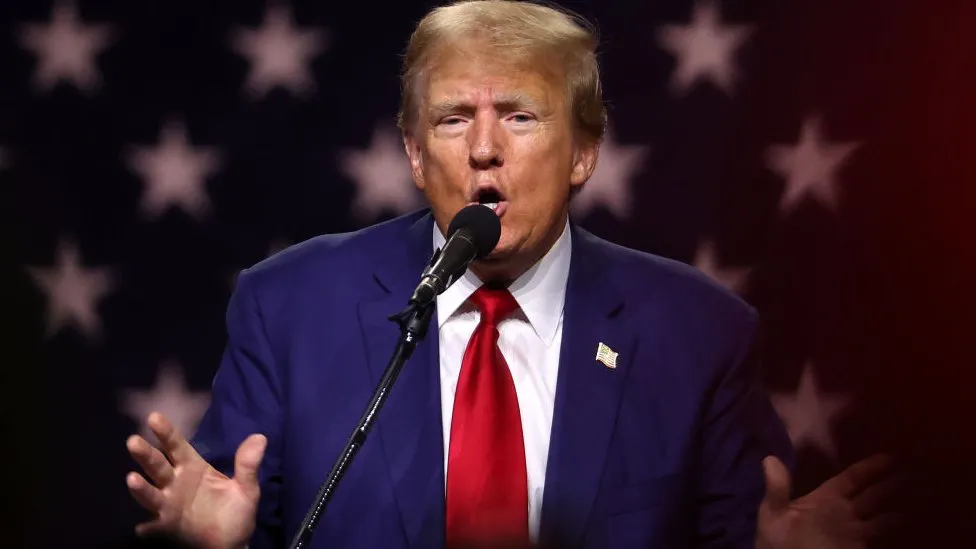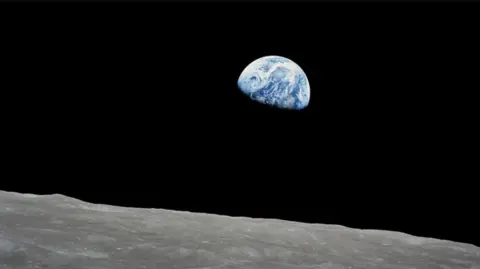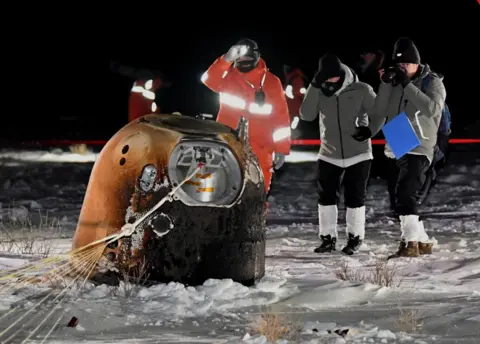Foreign News
Colorado Supreme Court kicks Trump off ballot, citing ‘insurrection’

Colorado’s Supreme Court has ruled that Donald Trump cannot run for president next year in the state, citing a constitutional insurrection clause.
In a landmark decision, the court ruled 4-3 that Trump is not an eligible candidate.
It is the first time that Section 3 of the US Constitution’s 14th Amendment has been used to disqualify a presidential candidate. Several attempts to kick Trump off the ballot in other states have failed.
Tuesday’s decision – which has been placed on hold pending appeal until next month – does not apply to states outside Colorado. The ruling only applies to the state’s primary election on 5 March, when Republican voters will choose their preferred candidate for president, though it could have an effect on the general election in November.
The justices wrote in their ruling: “We do not reach these conclusions lightly. We are mindful of the magnitude and weight of the questions now before us. We are likewise mindful of our solemn duty to apply the law, without fear or favor, and without being swayed by public reaction to the decisions that the law mandates we reach.”
The decision reverses an earlier one from a Colorado judge, who ruled that the 14th Amendment’s insurrection ban did not apply to presidents because the section does not explicitly name them. That same lower court judge also found that Mr Trump had participated in an insurrection in the 2021 US Capitol riot. His supporters stormed Congress on that day while lawmakers were certifying President Joe Biden’s election victory.
The Colorado Supreme Court’s decision does not go into effect until at least 4 January 2024. That is the eve of the deadline for the state to print its presidential primary ballots.
In a statement, Steven Cheung, a spokesman for the Trump campaign, called the ruling “completely flawed” and lambasted the justices, who were all appointed by Democratic governors. “Democrat Party leaders are in a state of paranoia over the growing, dominant lead President Trump has amassed in the polls,” Cheung said. “They have lost faith in the failed Biden presidency and are now doing everything they can to stop the American voters from throwing them out of office next November.” Cheung added that Mr Trump’s legal team would “swiftly file an appeal” to the US Supreme Court, where conservatives hold a 6 to 3 majority.
Representatives for Biden’s re-election campaign declined to comment on the Colorado ruling. But a senior Democrat affiliated with the campaign told CBS News, the BBC’s US partner, that the decision would help Democrats by supporting their argument that the US Capitol riot was an attempted insurrection.
The source said it would also aid Democrats in showcasing “the stark differences” between Mr Trump and Mr Biden.
Republican lawmakers condemned the decision, including House of Representatives Speaker Mike Johnson, who called it “a thinly veiled partisan attack”. “Regardless of political affiliation, every citizen registered to vote should not be denied the right to support our former president and the individual who is the leader in every poll of the Republican primary,” he said.
On the campaign trail Mr Trump’s primary rivals also assailed the ruling, with Vivek Ramaswamy pledging to withdraw his name from the ballot if Mr Trump’s candidacy is not re-instated.
Mr Trump, speaking at a campaign event in Iowa after the verdict was announced, did not address the ruling. But a fundraising email sent by his campaign to supporters argued “this is how dictatorships are born”.
Citizens for Responsibility and Ethics in Washington (Crew), the group that brought the case, welcomed the ruling. “It is not only historic and justified, but is necessary to protect the future of democracy in our country,” the group’s president, Noah Bookbinder, said in a statement.
Similar lawsuits in New Hampshire, Minnesota and Michigan have failed.
The 14th Amendment was ratified after the American Civil War. Section 3 was intended to block secessionists from returning to previous government roles once southern states re-joined the Union. It was used against Confederate president Jefferson Davis and his vice-president Alexander Stephens, both of whom had served in Congress. It has seldom been invoked since.
Mr Trump lost the state of Colorado by a wide margin in the last presidential election. But if courts in more competitive states followed suit on Tuesday’s ruling, Mr Trump’s White House bid could face serious problems.
During a one-week trial in Colorado last month, the former president’s lawyers argued he should not be disqualified because he did not bear responsibility for the US Capitol riot. But in its Tuesday ruling, the Colorado Supreme Court majority disagreed. They said Mr Trump’s messages before the riot were “a call to his supporters to fight and… his supporters responded to that call”.
Carlos Samour, one of three justices who dissented, argued the government could not “deprive someone of the right to hold public office without due process of law”. “Even if we are convinced that a candidate committed horrible acts in the past – dare I say, engaged in insurrection – there must be procedural due process before we can declare that individual disqualified from holding public office,” he wrote.
Mr Trump is facing four criminal cases, including one federal and one state case in Georgia related to his alleged election subversion efforts.
(BBC)
Foreign News
Nasa ‘Earthrise’ astronaut dies at 90 in plane crash

Apollo 8 astronaut Bill Anders, who snapped one of the most famous photographs taken in outer space, has died at the age of 90.
Officials say a small plane he was flying crashed into the water north of Seattle, Washington.
Anders’ son Greg confirmed that his father was flying the small plane, and that his body was recovered on Friday afternoon. “The family is devastated. He was a great pilot. He will be missed,” a statement from the family reads.
Anders – who was a lunar module pilot on the Apollo 8 mission – took the iconic Earthrise photograph, one of the most memorable and inspirational images of Earth from space.
Taken on Christmas Eve during the 1968 mission, the first crewed space flight to leave Earth and reach the Moon, the picture shows the planet rising above the horizon from the barren lunar surface.
Anders later described it as his most significant contribution to the space programme.

The image is widely credited with motivating the global environmental movement and leading to the creation of Earth Day, an annual event to promote activism and awareness of caring for the planet.
Speaking of the moment, Anders said: “We came all this way to explore the Moon, and the most important thing that we discovered was the Earth.”
Officials said on Friday that Anders crashed his plane around 11:40PDT (1940BST).
The US National Transportation Safety Board (NTSB) said the 90-year-old was flying a Beechcraft A A 45 – also known as a T-34. The agency said that the plane crashed about 80ft (25m) from the coast of Jones Island.
Anders also served as the backup pilot to the Apollo 11 mission, the name of the effort that led to the first Moon landing on July 24, 1969.
Following Anders’ retirement from the space programme in 1969, the former astronaut largely worked in the aerospace industry for several decades. He also served as US Ambassador to Norway for a year in the 1970s.
But he is best remembered for the Apollo 8 mission and the iconic photograph he took from space.
“In 1968, during Apollo 8, Bill Anders offered to humanity among the deepest of gifts an astronaut can give. He traveled to the threshold of the Moon and helped all of us see something else: ourselves,” Nasa Administrator Bill Nelson said in a statement.
Mark Kelly, a former astronaut who now serves as a US Senator for the state of Arizona, said in a post on X, formerly Twitter, that Anders “inspired me and generations of astronauts and explorers. My thoughts are with his family and friends”.
[BBC]
Foreign News
China’s Chang’e-6 lifts off from far side of Moon with rock samples

A Chinese spacecraft carrying rock and soil samples from the far side of the Moon has lifted off from the lunar surface to start its journey back to Earth, according to state media.
The achievement on Tuesday is a world first and the latest leap for Beijing’s decades-old space programme, which aims to send a crewed mission to the Moon by 2030.
The Xinhua News Agency, citing the China National Space Administration (CNSA), said that the ascender of the Chang’e-6 probe took off at 7:38am local time on Tuesday (23:38 GMT) and entered a preset orbit around the moon.
It described the move as “an unprecedented feat in human lunar exploration history”.
The Chang’e-6 probe was launched last month and its lander touched down on the far side of the Moon on Sunday. It used a drill and robotic arm to dig up soil on and below the Moon’s surface, according to Xinhua.
After successfully gathering its samples, the Chang’e-6 unfurled China’s national flag for the first time on the far side of the Moon, it said.
The agency cited the CNSA as saying that the spacecraft stowed the samples it had gathered in a container inside the ascender of the probe as planned.
[Aljazeera]
Foreign News
China says its spacecraft lands on Moon’s far side

China says its uncrewed craft has successfully landed on the far side of the Moon – an unexplored place almost no-one tries to go.
The Chang’e 6 touched down in the South Pole-Aitken Basin at 06:23 Beijing time on Sunday morning (22:23 GMT Saturday), the China National Space Administration (CNSA) said.
Launched on 3 May, the mission aims to collect precious rock and soil from this region for the first time in history. The probe could extract some of the Moon’s oldest rocks from a huge crater on its South Pole.
The landing was fraught with risks, because it is very difficult to communicate with spacecraft once they reach the far side of the Moon. China is the only country to have achieved the feat before, landing its Chang’e-4 in 2019.
After launching from Wenchang Space Launch Center, the Chang’e 6 spacecraft had been orbiting the Moon waiting to land. The lander component of the mission then separated from the orbiter to touch down on the side of the Moon that faces permanently away from Earth.
During the descent, an autonomous visual obstacle avoidance system was used to automatically detect obstacles, with a visible light camera selecting a comparatively safe landing area based on the brightness and darkness of the lunar surface, the CNSA was quoted as saying by state-run Xinhua news agency.
The lander hovered about 100m (328ft) above the safe landing area, and used a laser 3D scanner before a slow vertical descent. The operation was supported by the Queqiao-2 relay satellite, the CNSA said.
Chinese state media described the successful landing as an “historic moment”. The state broadcaster said “applause erupted at the Beijing Aerospace Flight Control Center” when the Chang’e landing craft touched down on the Moon early on Sunday morning.
The lander should spend up to three days gathering materials from the surface in an operation the CNSA said would involve “many engineering innovations, high risks and great difficulty”. “Everyone is very excited that we might get a look at these rocks no-one has ever seen before,” explains Professor John Pernet-Fisher, who specialises in lunar geology at the University of Manchester.
He has analysed other lunar rock brought back on the American Apollo mission and previous Chinese missions. But he says the chance to analyse rock from a completely different area of the Moon could answer fundamental questions about how planets form.
Most of the rocks collected so far are volcanic, similar to what we might find in Iceland or Hawaii. But the material on the far side would have a different chemistry . “It would help us answer those really big questions, like how are planets formed, why do crusts form, what is the origin of water in the solar system?” the professor says.
The mission aims to collect about 2kg (4.4lb) of material using a drill and mechanical arm, according to the CNSA.
The South Pole–Aitken basin, an impact crater, is one of the largest known in the solar system.
From there, the probe could gather material that came from deep inside the lunar mantle – the inner core of the Moon – Prof Pernet-Fisher says.
The Moon’s South Pole is the next frontier in lunar missions – countries are keen to understand the region because there is a good chance it has ice.

The capsule in the last Chinese moon mission, Chang’e 5, brought back soil and rocks in 2020 (BBC)
Access to water would significantly boost the chances of successfully establishing a human base on the Moon for scientific research.
If the mission succeeds, the craft will return to Earth with the precious samples on board a special return capsule.
The material will be kept in special conditions to try to keep it as pristine as possible.
Scientists in China will be given the first chance to analyse the rocks, and later researchers around the world will be able to apply for the opportunity too.
This is the second time China has launched a mission to collect samples from the Moon.
In 2020 Chang’e 5 brought back 1.7kg of material from an area called Oceanus Procellarum on the Moon’s near side.
China is planning three more uncrewed missions this decade as it looks for water on the Moon and investigates setting up a permanent base there.
Beijing’s broader strategy aims to see a Chinese astronaut walk on the moon by around 2030.
The US also aims to put astronauts back on the moon, with Nasa aiming to launch its Artemis 3 mission in 2026.
(BBC)
























